
This article is for Alpine enthusiasts who are having second thoughts. Or those who are crying wolf about Alpine entering the crossover market with the upcoming A390, which will be unveiled on Tuesday, May 27. The following lines and photos will attempt to convince them that there are many traces of crossover in the DNA of this sports car brand, born from the hard work of Jean Rédélé! The proof is in the pictures.
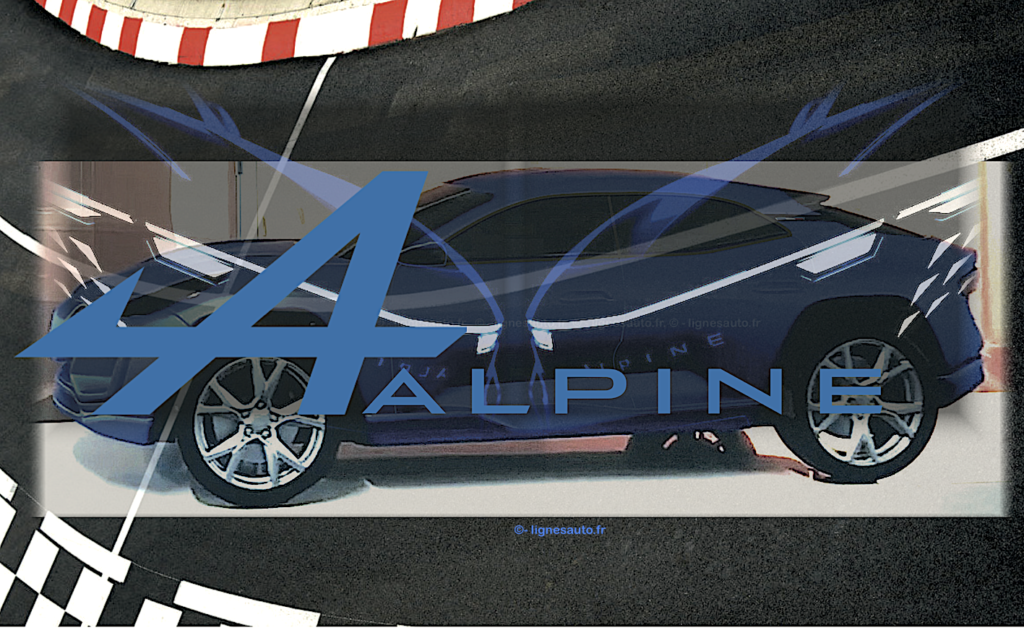
On Tuesday, May 27, the veil will officially be lifted on the first Alpine 5-door, 5-seater, 100% electric car, which already promises driving pleasure as intense as that of the A110. This is a milestone in French automotive history. This Alpine is the A390—pictured below—and, ironically, it arrives exactly 30 years after the brand was discontinued by then-Renault president Louis Schweitzer. It’s quite a comeback, and this A390 is a project that no one could have imagined when the brand rose like a phoenix and returned to the market in 2017.
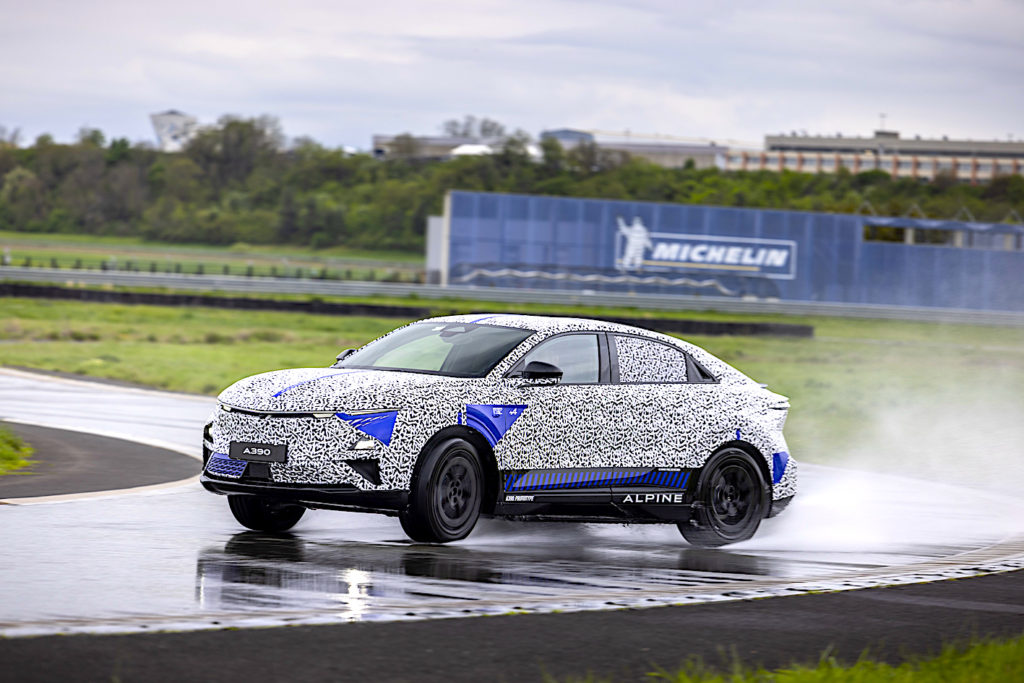
Unimaginable? Really? Not so sure… It’s true that the Alpine revival desired by Carlos Tavares while he was still working with a diamond logo on his heart (!) has not been the easiest of tasks. While some people can’t accept the mere idea of a 5-door Alpine with a crossover design, what would they have thought if they had discovered the new Alpine A110 with a front engine (below, the W19 project)? Because, yes, the current Alpine A110 could have become a front-engined Berlinette. Unthinkable? No, since a model and studies were carried out based on… the Nissan Z. Alliance and cost control seemed to be steering the future Berlinette project towards this architecture.
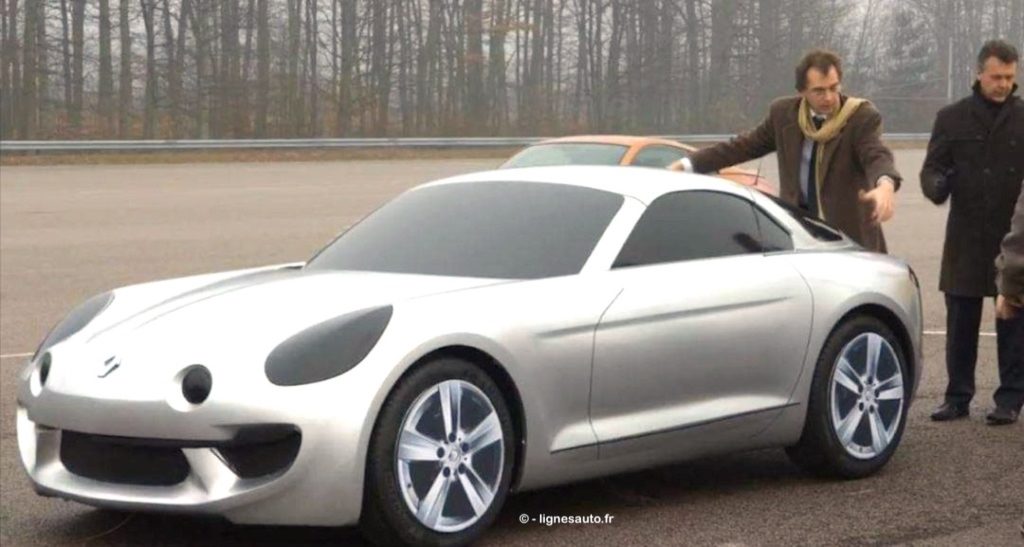
This proposal could have been the final nail in the coffin for fans of the brand, even though it must be acknowledged that the designers had achieved the remarkable feat of staying true to the spirit of the Berlinetta… on a technical basis that was nevertheless inconceivable. While the model above shows that the study is still in its early stages, with the wheels being nothing more than paper prints, the one below reveals the W19 project at the heart of the design center in Guyancourt, this time with a more advanced model that is clearly semi-hollow. It is worth noting that the rear hood (which does not house the engine but your luggage) is flanked by a huge Renault diamond. While the Alpine spirit seems to be there, the brand itself is simply absent.
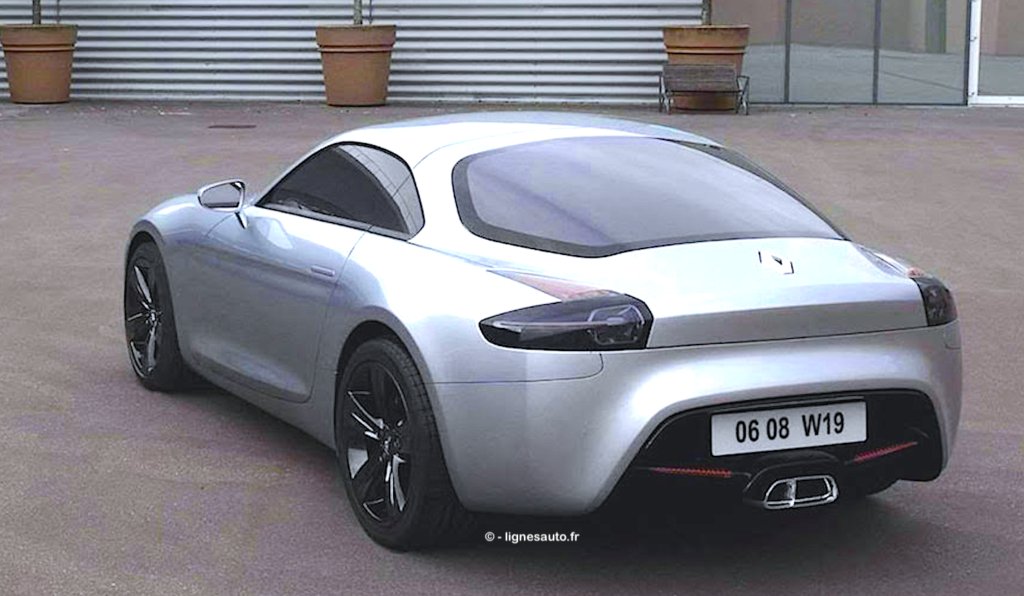
Behind the scenes, Alpine’s revival has not been smooth sailing. The project is not holding up. The focus is shifting towards a rear-engine architecture that respects the A110’s DNA. Phew! But the battle is far from won, because within the Renault group there is a Renault-Sport division that seems (logically?) to have priority and is working in the early 2010s on a project that is closely or loosely related, depending on which department you ask, to the Alpine spirit.
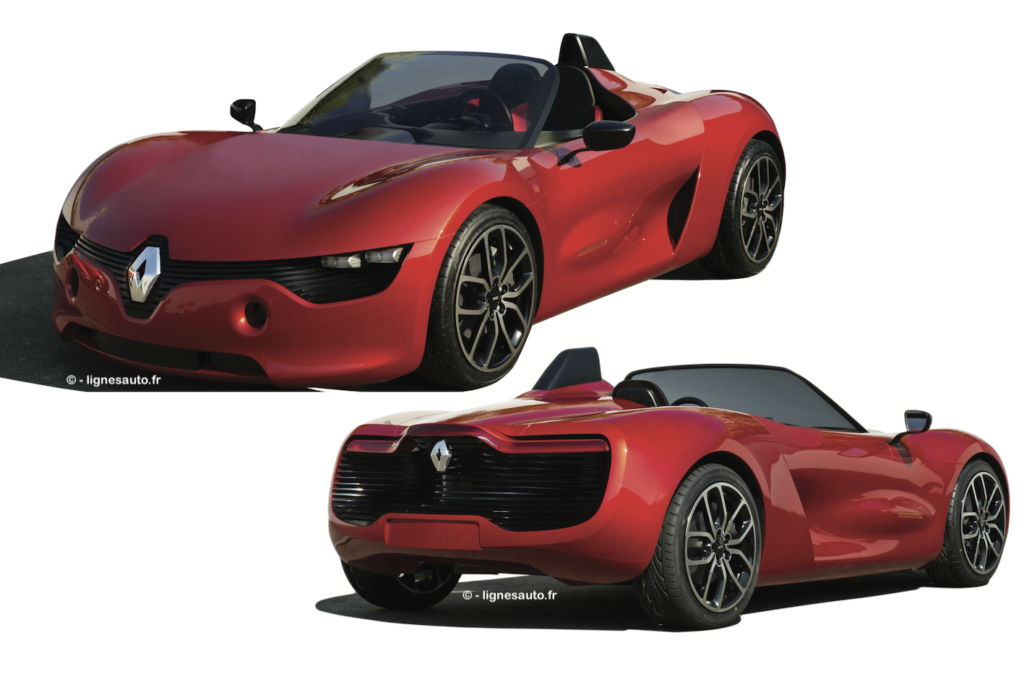
In 2014, five years before the unveiling of the new Alpine A110, this time with its rear-engine architecture, Renault was planning to present the E EA program, formerly known as RS1 (above), at the Geneva Motor Show. This two-seater roadster was therefore a Renault, or more precisely, a Renault-Sport, intended to revive the spirit of the Renault-Sport Spider launched almost ten years earlier.

As we discover in the previously unpublished document above, the period was teeming with projects aimed at reviving the Alpine spirit, but not really the brand itself, as the Renault-Sport logo prevailed. It wasn’t until Luca de Meo’s Renaulution plan in 2021 that this unexpected revival took place. At the time of the table above, the Alpine concept car celebrating the 50th anniversary of the A110 was being developed alongside the famous E EA roadster, formerly known as the RS1. All this while the first sedan designed by the new team led by Laurens van den Acker was due to be unveiled in 2012: the Clio, known under the code name B98. We are now approaching 2012 and still a long way from the definition of the new 2017 A110 below, known under the code name AS1… Ten years will have passed between the W19 project and the presentation of the A110.

You might argue, with some logic, that all this has nothing to do with the world of crossovers. Think again! The arrival of Laurens van den Acker as head of Renault design in 2010 was an opportunity to discover his strategy of launching six concept cars (the famous daisy) based on six stages of life, from love to work and leisure. Among these concepts, the second was a dynamic SUV that would be named Captur, unveiled in Geneva in 2011.
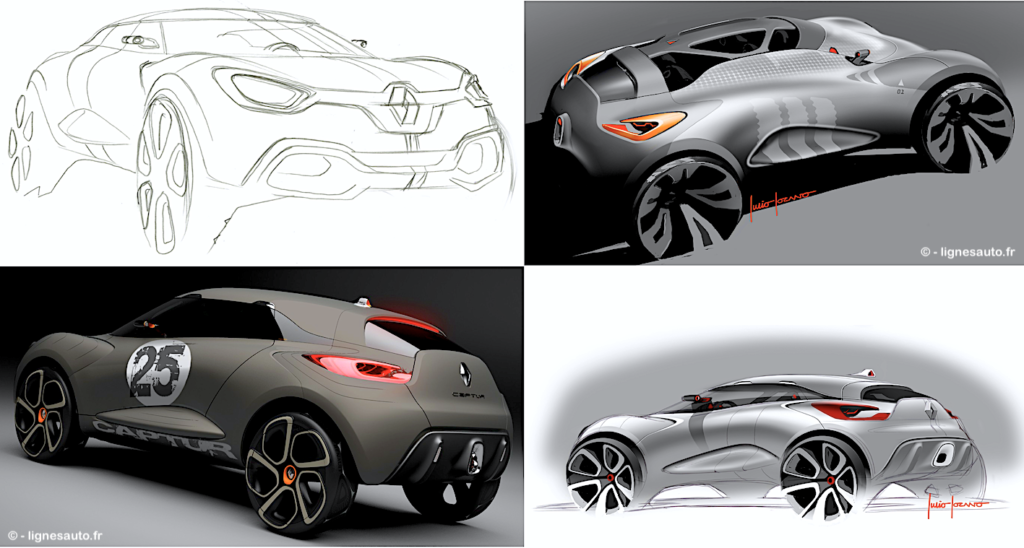
Julio Lozano, the exterior designer of this concept car (see drawings above), explained that “to design the Captur, I started with the image of a sprinter in the starting blocks, with his muscles tensed and the power unleashed when he sprints.” The concept car, known by the code name ZH25, is certainly sporty with its 1.6-litre twin-turbo engine developing 160 hp and its muscular styling! This later led Axel Breun to say, “It would have been a super Alpine SUV!” And there we have it: the Alpine crossover spirit is evident in this Renault laboratory… The proof is below with this study drawing of the concept car flanked not by a diamond but by the Alpine name. In 2011, it was all still a bit of a work in progress, as Renault, Renault-Sport and Alpine had not yet made a final decision.
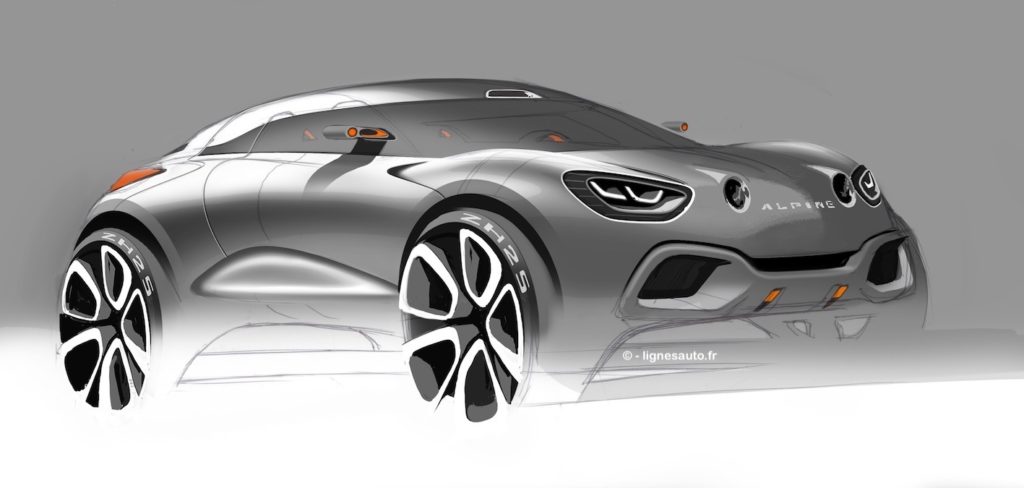
The situation is all the more complex given that Renault Sport is not shying away from exploring all kinds of concepts that express dynamism, boldness and… the crossover spirit. Six years before the launch of the Captur, badged Renault rather than Alpine, Renault Sport was working on the W16 project, a four-seat sports coupe with a mid-engine (!) and unapologetic SUV styling, shown below.
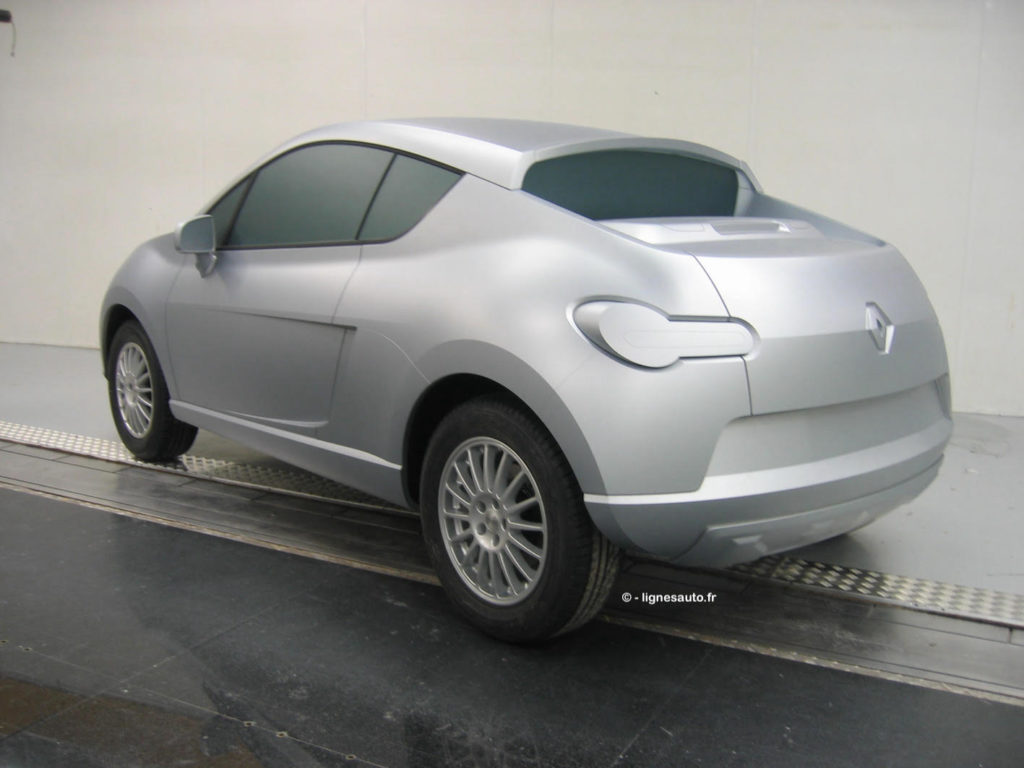
This unique coupe with its bold architecture, revealed in this previously unseen document below, offered surprising proportions. Admittedly, the two rear seats were squeezed in between the two front occupants and the powertrain behind them, but they were definitely there. The length of 4.19 m was extremely compact, and the roof was clearly made of a canvas that opened along almost the entire length to offer even more excitement.
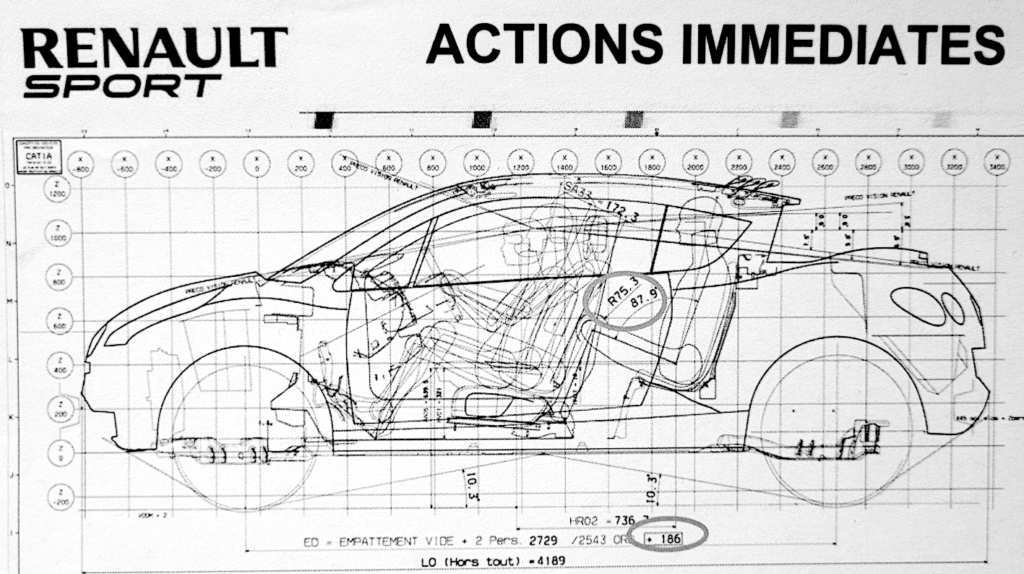
Its specifications were extremely ambitious and, above all, anticipated the future development of SUVs in the compact sports segment. The W16 was a 2+2 seater with a mid-rear engine and styling that drew on SUV design cues. Ten years before this type of silhouette became all the rage, Renault had a pretty impressive concept on its hands. In the special edition of the magazine “Alpine Renault Club Pays Bas” (No. 92, alpinerenault.nl), Axel Breun said of the project that it “is like a small Porsche Macan with a very short hood. I had already worked on an Alpine SUV in 1989 with a panoramic windshield that said a lot about my love for the Stratos. The model of the W16 project is still on my desk, and it’s still as attractive as ever!”

The crossover theme has made a big splash in Renault Sport’s plans. But there’s no word yet on Alpine… For the latter, the first step was the revival of the legendary Berlinette model in 2017. The design was therefore overseen by Laurens van den Acker. “For me, it’s a great success, a kind of symbol! Frankly, I never imagined I’d be designing an Alpine when I arrived, it’s a real bonus.” The 2014 restructuring allowed Antony Villain to take charge of the design of the 2017 Berlinette, announced by Axel Breun’s team with the 2012 A110-50. Renault’s CEO at the time, Carlos Tavares, drove it in Monaco!

It was now possible to mention Alpine without causing internal friction. But there were still some concerns that year when the concept car for the first daisy—DéZir—was sketched with some unofficial drawings bearing the Alpine logo! “We’re not going to turn the company upside down!” suggested Laurens van den Acker to his concept manager, Axel Breun. The latter therefore abandoned the idea of painting the DéZir concept in Alpine blue!
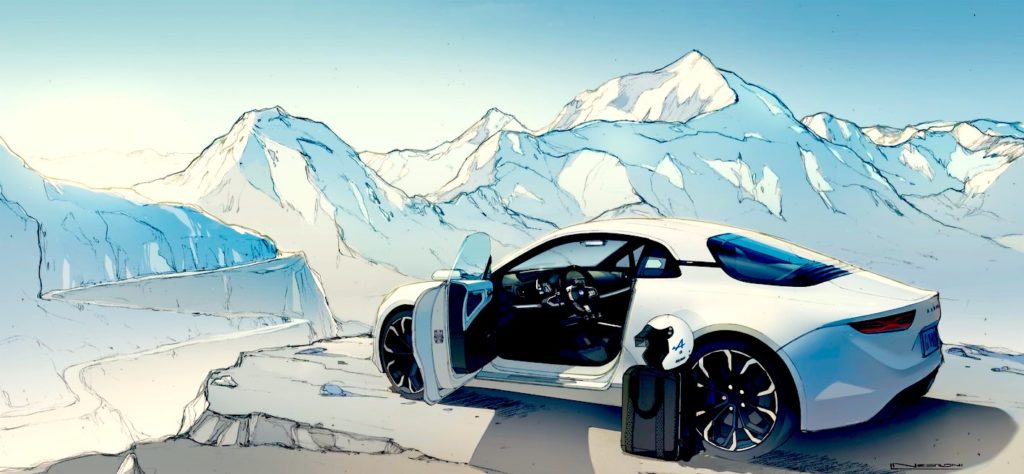
When the new A110 was finally unveiled for release in 2018, the Alpine team had no intention of putting away their drawing boards. They were already imagining an architectural concept for an SUV version of the A110, with the styling cues of the Berlinette but with a raised architecture and, above all, four (or five?) seats and four (or five?) doors. In the late 2010s, Alpine was therefore seriously considering a complementary model to the AS1 program: the crossover unveiled below, a kind of A390 ahead of its time.

This ambition to take the A110 to new playgrounds is even expressed through a specific and unique model, the A110 SportX (below), unveiled at the 2020 International Motor Show. Its body is 8 cm wider and its ground clearance is 60 cm. Inspired by the A110s that challenged the competition on snowy rallies, the SportX revives the idea of a crossover silhouette. But in January 2020, the Renault group was not in what could be called great shape. The aftermath of Carlos Ghosn’s arrest in Japan in November 2018 shook the Alliance, and the Renault group was looking for a savior to take the reins of the company.

Paradoxically, it is thanks to the arrest of the man who did not oppose the relaunch of the 2017 A110 model that Alpine will see its fortunes change! On July 1, 2020, Luca de Meo replaced Ghosn and became CEO of the Renault Group. He laid the foundations for his first restructuring plan: Renaulution. It was presented in January 2021 with several shocking announcements. Renault will produce an electric R5, Dacia will think bigger with the Bigster, and the group will now be based on four entities: Renault, Dacia, Mobilize, and… Alpine. The shock among Renault Sport fans was huge. The “RS” label was swallowed up in this revolution, and Alpine replaced Renault in F1… Alpine even joined the Renault range with the “Esprit Alpine” trim. It was the end of the road for Gordini and Renault Sport.

Alpine is becoming a brand in its own right, alongside Renault and Dacia. Better still, the plan already outlines ambitions for a 100% electric range, initially comprising three models, including a crossover, the A390, which will be unveiled at the end of this month. This is the Dream Garage. Since then, it has grown to include seven cars. For now, the six official models above are the two electric A110s (berlinetta and roadster), the 2+2 A310, the R5-based A290, the A390 crossover, and a more ambitious crossover in terms of size, the A490 (or A590?). The latter could be aimed at the US market in addition to Asian markets, but with the geopolitical context changing daily, we will have to wait for confirmation of this information.
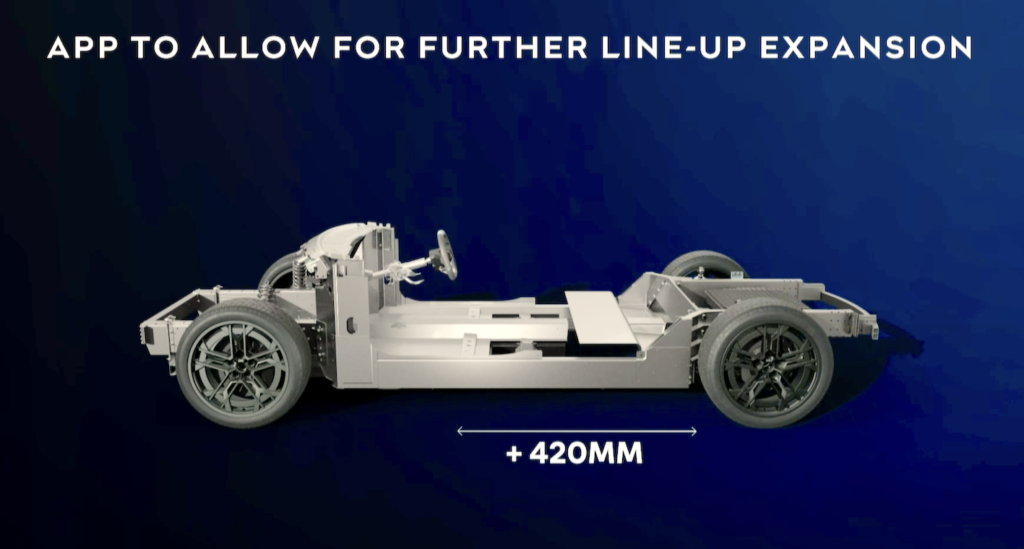
For these sporty models, the A110, A110 roadster, and A310, Alpine designed its own APP platform, which has since evolved into a multi-energy concept. As the collaboration with Lotus that had been envisaged at the start of the Renaulution program has been discontinued, the platform will therefore be 100% Alpine. To make the most of this platform, the product plan would include a seventh product based on it rather than on a Renault platform (as for the A290 and A390).
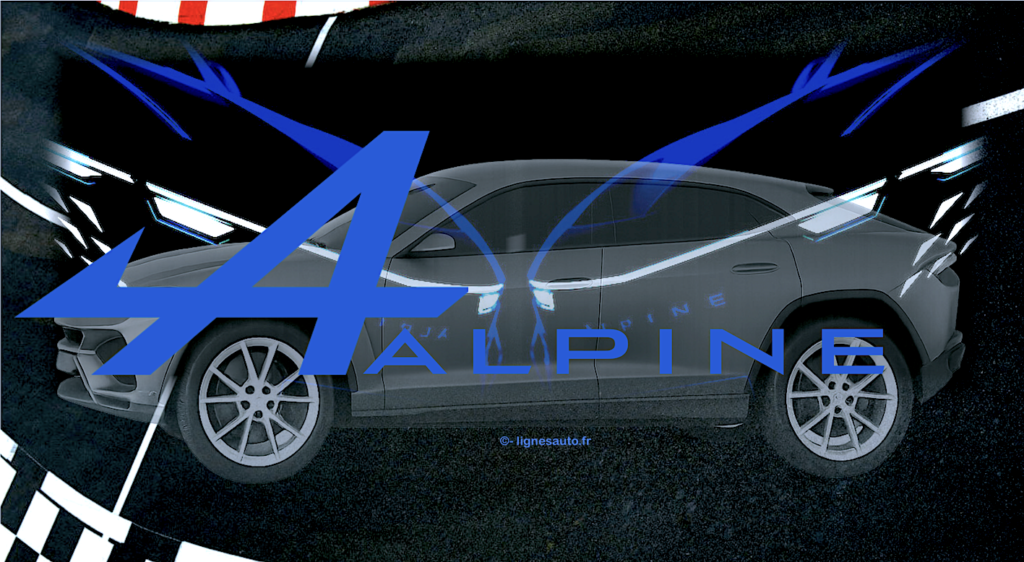
BONUS: these two SUV projects were conceived by Alpine in the 1970s and 1980s.
The VVA (Véhicule Vert Alpine) was conceived in the mid-1970s and designed by Michel Jardin. This designer, who went on to become Renault’s concept car designer until 2006, imagined a competitor to the Matra Simca Rancho produced at the Romorantin plant and based on a Simca 1100 van platform. The VVA enabled studies to be carried out on the layout of the seats, which would later benefit the 1984 Espace project. Nothing is ever wasted…
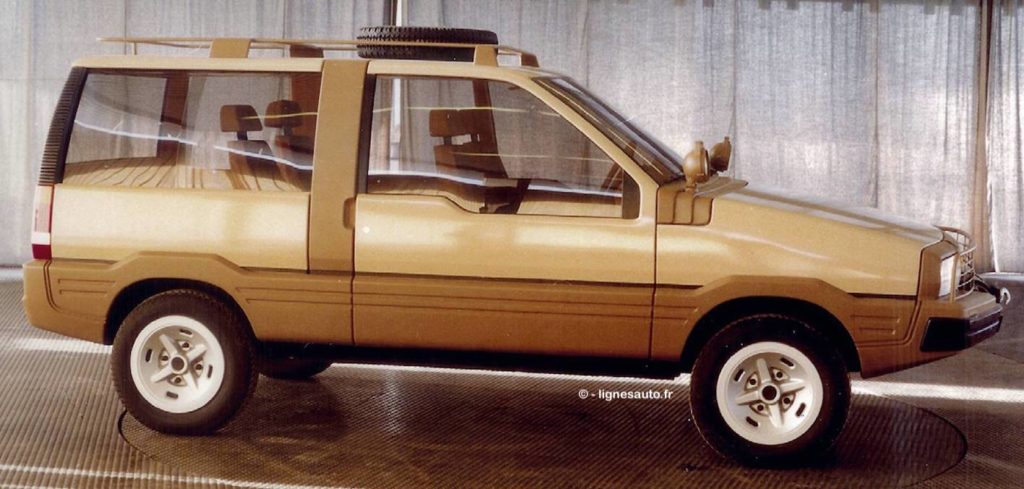
However, the commercial agreement signed between Renault and AMC on April 31, 1978, put an end to the VVA project, which was to be produced in Dieppe. In addition to the sale of the R5 “Le Car” and the manufacture of Renault models in America, this agreement provided for the sale of Jeep models in Europe. The VVA would then become an undesirable internal competitor… Never mind, the project was transformed into the VGR, or Véhicule de Grande Randonnée (Long-Distance Vehicle).
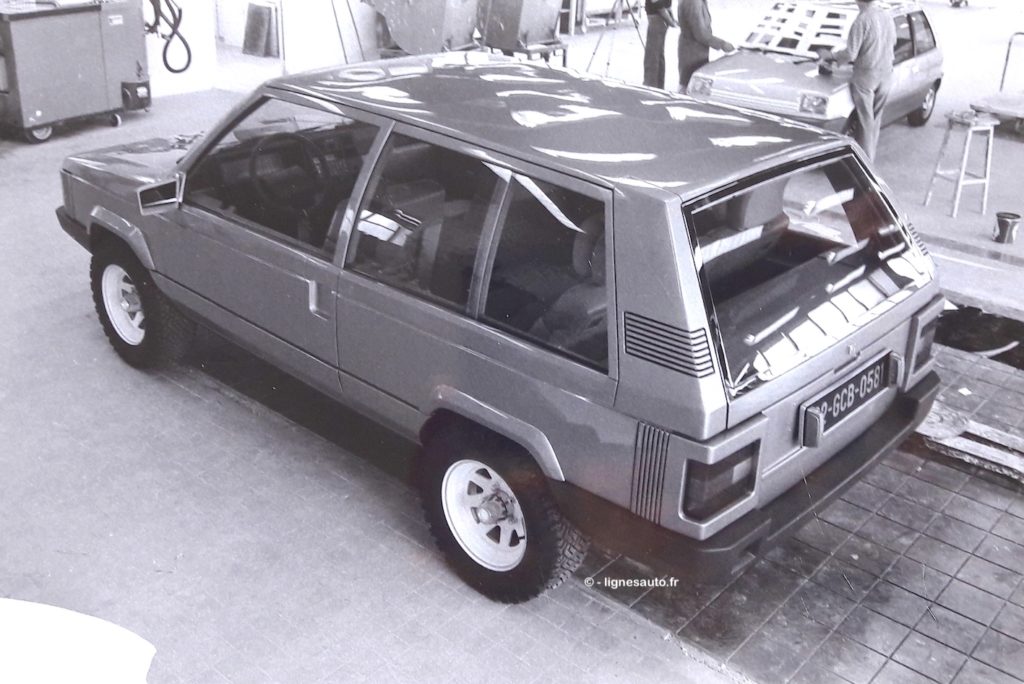
Several internal and external Renault employees worked on this program, including Marcello Gandini (above with an interior designed by Mario Bellini) and Piero Stroppa (below). The VGR replaced the VVA program at the turn of the 1970s. With designs even closer to those of Jeep, there was little hope that these former “Véhicule Alpine Vert” programs would ever see the light of day. But with its upcoming A390, more than 40 years later, Alpine finally has its crossover!

VISUAL BONUS
Comparison of the signature lighting
of the upcoming Alpine A390 and the Alpine Alpenglow.
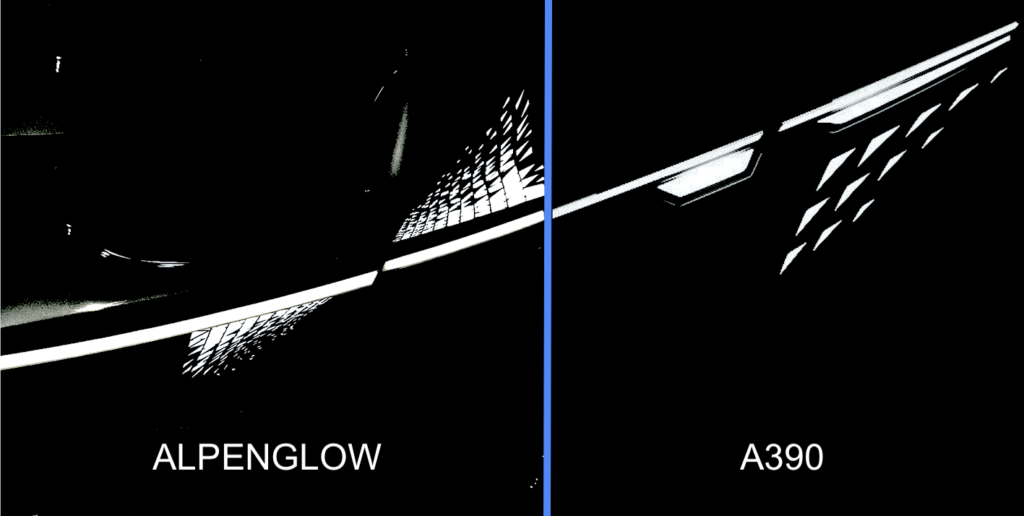
Coming up on May 27th…


